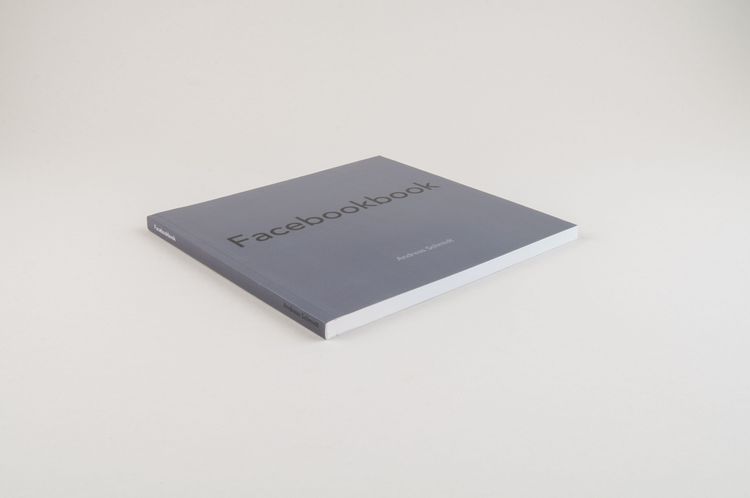Facebookbook uses Blurb’s automatic import and layout option for Facebook, which was included in their browser-based software Bookify (discontinued in 2020). Andreas Schmidt’s book, which shows the content of his Facebook profile and some comments by his Facebook friends, is one of the earliest examples of this technique being used in the context of artist’s books that reflect social media.
All the content from his profile was imported and automatically laid out, making it a generated book. It shows his activities in the art world and some important events of his colleagues and friends from the Artists’ Books Cooperative Schmidt belongs to. Since Schmidt’s Facebook profile consists mostly of photos showing him and his artist friends, rather than family and holiday pictures, Facebookbook also gives insight into the early intertwining of social media, art world, artist’s books, and print-on-demand.
When the technology was still quite new, Blurb once wanted to show Schmidt’s book at a fair as an example of how a Facebook feed can be turned into a Blurb book—without offering any financial compensation. Schmidt was at least able to negotiate fifty free copies for himself.
Ten more books followed, using the same method and further transforming Schmidt’s social media activities into books. Their irregular numbering ironizes the current trend toward serial production: Facebookbook 2 (2012), Facebookbook 3a (2012), Facebookbook 3b (2012), Facebookbook 4 (2012), Facebookbook 5 (2012), Facebookbook 6 (2013), Facebookbook 7.1 (2013), Facebookbook 7.2 (2013), Facebookbook 8 (2013), Facebookbook 9 (2013).
In addition, there were a few spin-offs that likewise probe social media idiosyncrasies: Friends of Andreas Schmidt (2010), Add as Friend (2010), I want to be your friend today, tomorrow and for the rest of my life (2011), and Jukerman A. Bahk walked 10,559 steps on 4/30/2012, 3:27 PM in 188 minutes (2012).
